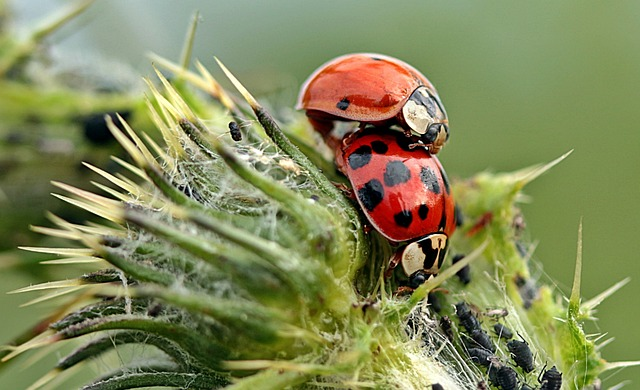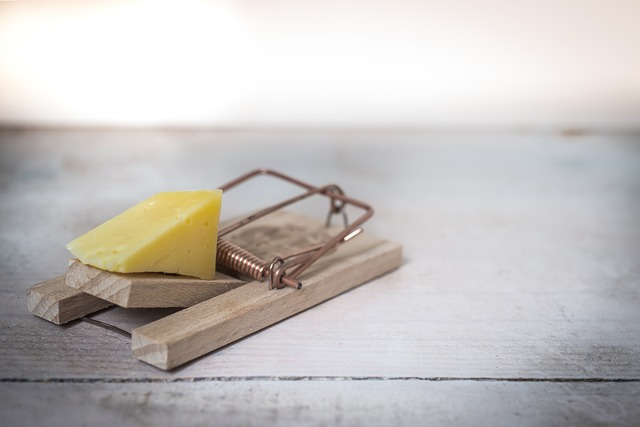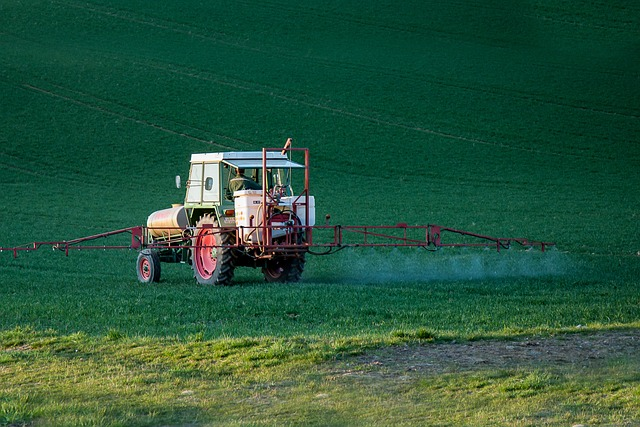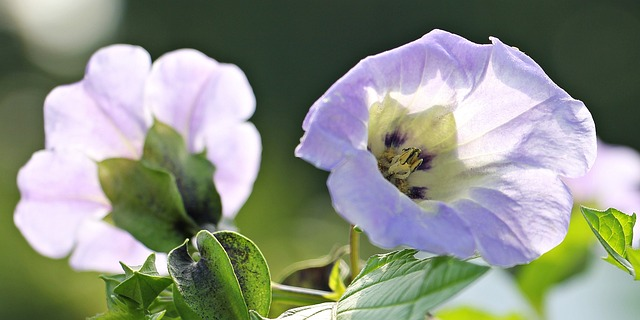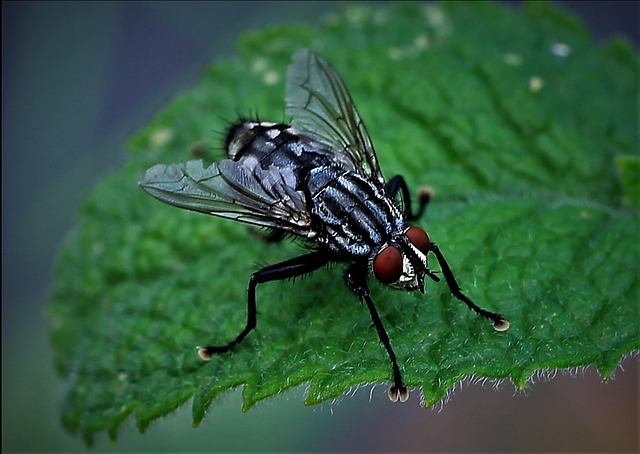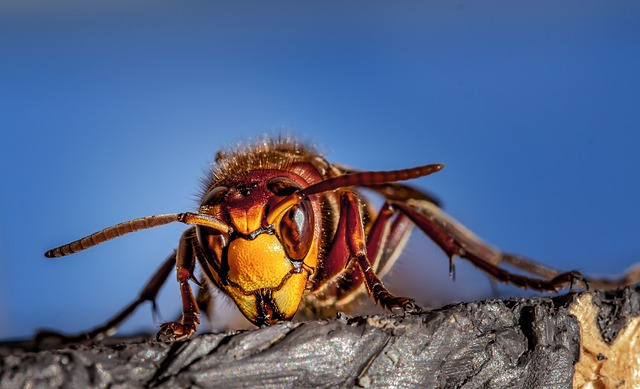Are you struggling with managing pests while minimizing the impact on the environment? Do you wish there was a comprehensive guide to help you navigate the complex world of Integrated Pest Management (IPM)? You’ve come to the right place! This blog post will not only explain the concept of IPM, but also provide you with a step-by-step guide to implementing this ecosystem-based strategy for long-term prevention of pests and their damage using a combination of techniques.
From understanding the core components of IPM to exploring the various methods of pest control, this blog post will equip you with the knowledge and tools you need to make informed decisions about managing pests in a sustainable and environmentally friendly manner. So let’s dive in and discover the world of IPM!
Short Summary
- Integrated Pest Management (IPM) is an ecosystem-based strategy utilizing monitoring, thresholds, cultural and biological controls to reduce reliance on chemical pesticides.
- IPM involves the use of crop rotation, diversity, sanitation and habitat manipulation as well as mechanical/physical control techniques for effective pest management.
- Chemical control should be employed only when necessary with careful selection and application in adherence to safety guidelines.
Understanding Integrated Pest Management (IPM)
Introducing Integrated Pest Management (IPM), an ecosystem-based strategy that focuses on long-term prevention of pests and their damage using a combination of techniques. IPM is designed to provide effective and environmentally sensitive pest control, minimizing the use of chemical pesticides while maximizing the use of natural enemies, mechanical control, and cultural practices. In most cases, IPM means utilizing a combination of methods to prevent pests, with chemical control being the last resort.
The role of IPM in modern agriculture is significant, as it is widely utilized in agriculture, horticulture, forestry, and other sectors to minimize the use of pesticides and promote sustainable pest control methods. By monitoring and evaluating data related to the pest, its biology, and environmental conditions, a decision can be made to either tolerate the pest or take action for its control. This information is then used to facilitate the selection of the most efficient management methods and the ideal time to apply them.
The Core Components of IPM
So, what are the core components of IPM? This approach to pest management incorporates six essential elements, such as monitoring, setting economic injury thresholds, and utilizing cultural, biological, and chemical controls. These components work together to create a comprehensive strategy for managing pests in an environmentally sensitive way.
Cultural practices include cultivating a robust crop that is resistant to pest infestations and employing plants with disease-resistant characteristics. Biological control methods involve the utilization of natural enemies and microbial control agents to reduce pest populations. Chemical controls, considered a last resort, involve the use of pesticides, herbicides, and other compounds to repel, confuse, or kill pests.
The Role of IPM in Modern Agriculture
IPM plays a crucial role in modern agriculture, providing a sustainable solution to pest management that can minimize human and environmental exposure to hazardous chemicals and potentially lead to cost savings. Agricultural insect pests have traditionally been the primary focus of IPM programs, but the principles and practices of IPM can be applied to a wide range of pest problems, including weeds, rodents, and plant pathogens.
Predictive models are often employed in IPM programs to assist with implementation. By understanding the biology and behavior of pests, as well as the environmental factors that influence their populations, it is possible to predict when and where pest problems are likely to occur. This knowledge can then be used to determine the most effective and least harmful management methods, ensuring that pests are controlled in an environmentally sensitive manner.
Biological Control Methods in IPM
One of the cornerstones of IPM is the use of biological control methods, which involve the utilization of natural enemies and microbial control agents to reduce pest populations. By tapping into the power of these beneficial organisms, it is possible to achieve sustained pest suppression while minimizing the need for chemical pesticides and preserving a balanced ecosystem.
In IPM, biological control methods are implemented through the conservation of existing natural enemies, the introduction of new natural enemies, and the mass rearing and periodic release of natural predators, parasites, and pathogens to control pest populations. These methods offer numerous advantages, including the potential for long-term pest suppression and a reduced reliance on chemical control measures.
Conservation and Augmentation of Natural Enemies
Enhancing the presence and effectiveness of beneficial organisms is a key element of biological control in IPM. By protecting and increasing populations of beneficial insects, predators, and parasites that naturally control pest populations, it is possible to reduce the need for chemical pesticides and increase crop yields.
Strategies for conserving and augmenting natural enemies include modifying the environment or existing practices to protect and enhance specific natural enemies or other organisms to reduce the effect of pests, as well as introducing additional numbers of a natural enemy when too few are present to control a pest effectively.
Examples of conservation and augmentation of natural enemies include the utilization of beneficial insects such as ladybugs and lacewings to manage aphids, the employment of predatory mites to manage spider mites, and the release of parasitic wasps to manage caterpillars.
Microbial Control Agents
Microbial control agents play a crucial role in biological control, offering targeted pest suppression and helping to preserve a balanced ecosystem. Employing bacteria, fungi, and viruses to target specific pests, microbial control agents can effectively reduce pest populations while preserving the safety of non-target organisms.
These environmentally friendly control agents can be applied as part of an IPM program, providing a sustainable alternative to chemical pesticides. By harnessing the power of these microscopic organisms, it is possible to achieve effective pest control while minimizing the impact on the environment and other beneficial organisms.
Mechanical and Physical Control Techniques
In addition to biological control methods, IPM also incorporates mechanical and physical control techniques. These methods involve the implementation of traps, barriers, and environmental manipulation to inhibit or diminish pest infestations. Mechanical and physical control techniques offer several advantages, including the potential for targeted pest suppression and a reduced reliance on chemical control measures.
Traps and barriers play a crucial role in IPM, serving as the first line of defense to impede or diminish pest numbers by limiting their access or utilizing specific devices to eliminate them.
Environmental manipulation, on the other hand, involves adjusting the environment to make it less conducive to pests. This may include modifying the temperature, humidity, or light levels.
Traps and Barriers
Traps and barriers are essential tools in IPM, providing a means to capture or prevent pests from specific areas. These include, but are not limited to, sticky traps, pheromone traps, light traps, and physical barriers such as fences or nets. By employing these devices, it is possible to monitor pest populations, safeguard crops from pest attacks, and exclude pests from certain areas.
However, there are some drawbacks to utilizing traps and barriers in IPM. The expense of purchasing and maintaining the traps and barriers, as well as the potential for pests to develop resistance to the traps and barriers, should be considered when selecting these methods as part of an IPM program.
Environmental Manipulation
Environmental manipulation is another key aspect of mechanical and physical control techniques in IPM. By altering the environment to make it less conducive for pests, it is possible to achieve effective pest control while minimizing the need for chemical pesticides. Examples of environmental manipulation include increasing the complexity and diversity of vegetation, removing wildlife food sources, and adjusting environmental conditions such as temperature, humidity, or light levels.
By creating unfavorable conditions for pests and reducing their ability to thrive, environmental manipulation can play a vital role in preventing and controlling pest infestations.
Cultural Practices for Pest Management
Cultural practices for pest management are another essential component of IPM, involving crop rotation, diversity, sanitation, and habitat manipulation to reduce pest populations and damage. By implementing these practices, it is possible to achieve effective pest control while minimizing the impact on the environment and other beneficial organisms.
Crop rotation and diversity are critical to disrupting pest life cycles and reducing pest populations, while sanitation and habitat manipulation involve the removal of weeds, debris, and other sources of pests, as well as the creation of habitats that are not conducive to pests. By employing these cultural practices, IPM can provide a sustainable and environmentally friendly approach to pest management.
Crop Rotation and Diversity
In IPM, crop rotation and diversity are essential practices for reducing pest populations and disrupting pest life cycles. By alternating the types of crops grown in a field, it is possible to prevent pests from becoming established and causing significant damage.
Crop rotation and diversity can be achieved by altering the crops grown in a given field year round, planting cover crops, and utilizing companion planting. These practices not only disrupt pest life cycles, but also can improve soil fertility and crop yields, making them an integral part of a sustainable IPM program.
Sanitation and Habitat Manipulation
Sanitation and habitat manipulation are two important cultural practices in IPM that can help create unfavorable conditions for pests and reduce their impact. Sanitation involves practices such as removing crop refuse, sterilizing tools, and destroying plants or plant parts that may harbor pests.
Habitat manipulation, on the other hand, involves altering the environment to make it less suitable for pests, such as increasing the complexity and diversity of vegetation or removing wildlife food sources. By implementing sanitation and habitat manipulation practices, it is possible to reduce the risk of pests and their damage in the long term.
These practices, when combined with other IPM methods, can provide a comprehensive and environmentally friendly approach to managing pests.
Chemical Control in IPM: A Last Resort
While IPM emphasizes the use of biological, mechanical, and cultural control methods, there are times when chemical control is necessary. In IPM, chemical control is employed as a last resort, with careful selection and application to ensure minimal risk to human health and the environment.
Chemical control methods employed in the context of IPM involve the utilization of pesticides, herbicides, and other compounds that can repel, confuse, or kill pests. However, it is crucial to recognize the potential risks associated with the use of chemical control methods, as improper selection and application can result in potential risks to human health and the environment.
Pesticide Selection and Application
When employing chemical control methods as part of an IPM approach, it is critical to choose the most suitable pesticide for the pest and environment, and to apply it correctly. This entails adhering to all safety guidelines and using the minimum amount of pesticide necessary to achieve the desired outcome.
By selecting the least toxic and most effective pesticide for a specific pest problem, and applying it correctly, it is possible to minimize the risks associated with chemical control and ensure the safety of both people and the environment.
Resistance Management
Resistance management is an essential component of IPM, involving the implementation of practices and strategies to avoid or postpone the emergence of resistance in pest populations to pesticides and to preserve the effectiveness of beneficial insecticides.
In order to impede or delay the emergence of pesticide resistance, minimizing pesticide use, avoiding tank mixes, utilizing long-term rotations, monitoring pest populations, and making full use of non-pesticidal methods should be implemented. By employing these strategies, it is possible to prevent or delay the development of pesticide resistance in pest populations, ensuring the continued effectiveness of chemical control methods.
Implementing IPM Programs: A Step-by-Step Guide
Now that you have a comprehensive understanding of IPM and its various components, it’s time to put this knowledge into practice. This step-by-step guide will walk you through the process of implementing IPM in your own garden, farm, or business, from monitoring and identifying pests to making decisions and taking action based on IPM principles.
By following this guide and incorporating the various methods of IPM, you can achieve effective pest control while minimizing the impact on the environment and other beneficial organisms. So, let’s get started on implementing IPM and making a positive change for the future of pest management!
Monitoring and Pest Identification
The first step in implementing IPM is monitoring and pest identification. This involves regularly inspecting crops and other areas for signs of pests, accurately identifying the pests present, and assessing the damage they have caused. Monitoring and pest identification are essential elements of IPM, as they facilitate early detection of pests and the implementation of effective pest management strategies.
Methods used to monitor and identify pests include visual inspection, trapping, and sampling. Visual inspection involves looking for evidence of pest activity, such as damage to plants or the presence of pests. Traps can be used to capture pests and identify them. Sampling involves collecting and examining samples of plants or soil to detect the presence of pests. By accurately identifying the pests present, it is possible to select the most effective management approach.
Decision Making and Action
Once pests have been identified and monitored, it’s time to make decisions and take action. The decision-making process in IPM involves assessing the pest population and damage, determining the most effective course of action, and implementing the necessary measures to regulate the pest population.
This may involve selecting from a variety of tactics, such as biological control methods, mechanical and physical control techniques, cultural practices, and chemical control. By carefully considering the most effective and least harmful management methods, it is possible to control pests while minimizing risks to people and the environment.
Summary
In conclusion, Integrated Pest Management (IPM) is a comprehensive and environmentally sensitive approach to managing pests. By combining various methods such as biological control, mechanical and physical control techniques, cultural practices, and chemical control as a last resort, IPM aims to achieve effective pest control while minimizing the impact on the environment and other beneficial organisms.
By following the step-by-step guide provided in this blog post and implementing IPM principles in your garden, farm, or business, you can take a proactive approach to pest management, promoting a healthier and more sustainable future for all. So, why not embrace IPM today and make a positive change for the future of pest management?
Frequently Asked Questions
What are the different types of pest management?
Pest management involves a range of options, from preventive measures such as good sanitation and exclusion techniques to physical, biological, or chemical control methods.
These can be combined to provide an effective and sustainable solution.
How much is pest control per month?
On average, pest control services range from $30-$100 per month, depending on the size of your property and type of pests.
The best way to find out the cost for a specific situation is to contact a professional pest control provider for an estimate.
What is the best method of pest management?
The best method of pest management is using an integrated pest management strategy, which involves preventative measures, monitoring, and judicious use of chemical or mechanical controls. This approach combines several methods to keep pests under control while minimizing disruption and damage to the environment.
What are the three rules to pest management?
The three rules to pest management are: (1) Prevent unacceptable levels of pest damage; (2) Minimize the risk to people, property, infrastructure, natural resources, and the environment; and (3) Reduce the evolution of pest resistance to pesticides and other pest management practices.
What are the main components of Integrated Pest Management (IPM)?
Integrated Pest Management (IPM) is a sustainable approach to pest management that combines prevention, monitoring, and careful use of safe pesticides when needed. It requires an understanding of the pest’s lifecycle, preventive measures, monitoring for pest activity, setting economic injury thresholds, using biological control, utilizing cultural controls, and judicious use of pesticides as a last resort.
IPM is a holistic approach that seeks to reduce pest populations to a level that does not cause economic or aesthetic damage. It is an environmentally friendly approach that seeks to minimize the use of pesticides and other chemical controls. IPM is a long-term project.

